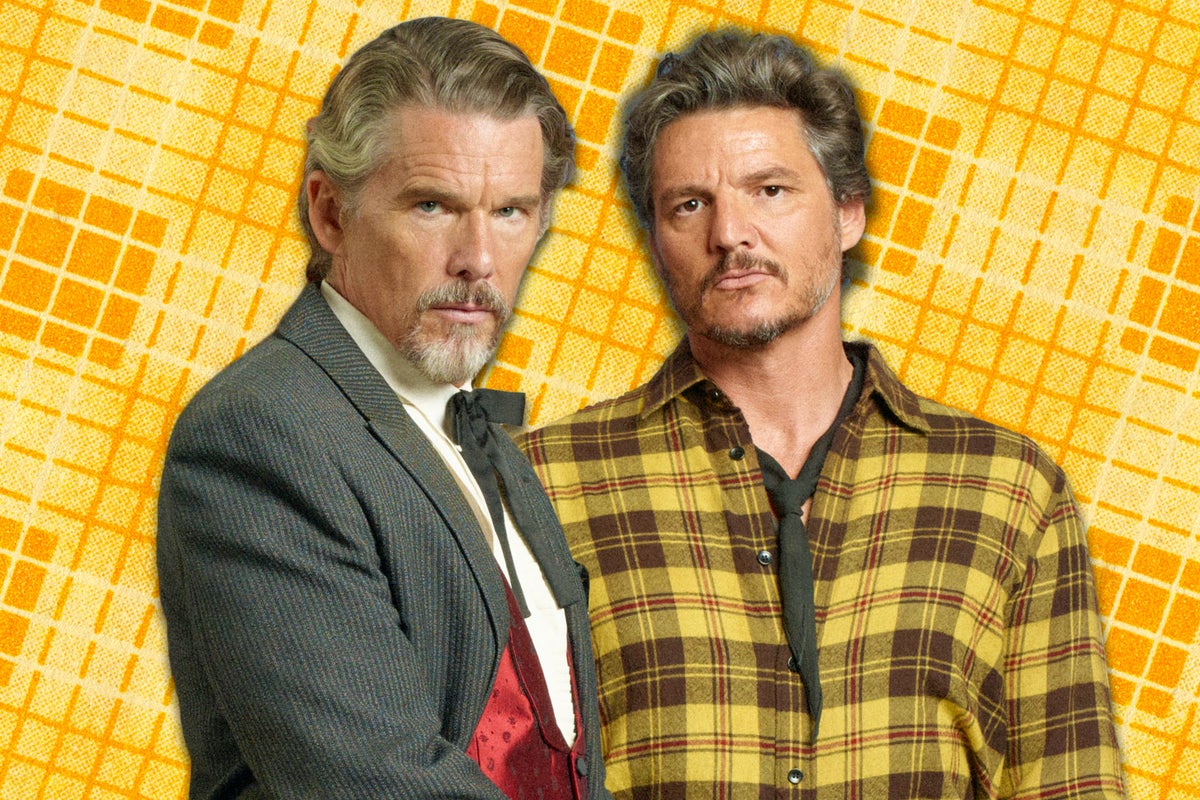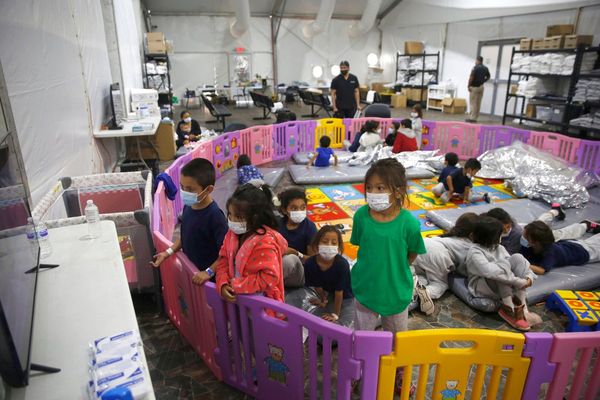
When Ethan Hawke strutted down the Cannes Film Festival red carpet this summer ahead of the premiere of his new film, Pedro Almodóvar’s romantic western Strange Way of Life, his wardrobe bore an interesting bit of trivia: it was put together by the film’s producer.
Strange Way of Life marks the first creation of Saint Laurent Productions, a newly minted film production arm of the esteemed fashion house. The nascent studio is overseen by Anthony Vaccarello, Saint Laurent’s creative director, and boasts projects in development from an enviable roster of talent including David Cronenberg, Wong Kar-wai, Paolo Sorrentino, Jim Jarmusch and Gaspar Noé. “I want to work with and provide a space for all the great film talents who have inspired me over the years,” said Vaccarello when announcing the studio’s launch.
Though Saint Laurent may currently be the only fashion house to boast an in-house film studio, Strange Way of Life is hardly the first project of its kind. In 2019, the Cannes Directors’ Fortnight hosted the premiere of the Valentino-funded The Staggering Girl from Luca Guadagnino (Call Me by Your Name), another popular auteur with a chic European sensibility. Similarly, both of Olivier Assayas’s lauded collaborations with Kristen Stewart, Clouds of Sils Maria and Personal Shopper, were partly supported by Chanel, for whom Stewart is a longtime ambassador. And this month’s release of Louis Garrel’s The Innocent was in part made possible through the participation of Giorgio Armani, which is thanked in the film’s opening credits.
Fashion has of course been intertwined with film since the inception of cinema – the medium is able to capture the sweep and sway of garments in ways that photography or illustration rarely can. Many of cinema’s most iconic moments have been hewn from the handiwork of fashion’s greatest artists; think Audrey Hepburn’s Givenchy dresses in Breakfast at Tiffany’s, or Richard Gere’s wide-shouldered Armani suits in American Gigolo. In more recent decades, it has become commonplace for fashion houses to task cinema’s creme de la creme with forging their brands’ visual identities; Martin Scorsese and David Lynch directed adverts for Jil Sander and Calvin Klein, respectively, in the Eighties, while the likes of Sofia Coppola and Darren Aronofsky have picked up work between films by bringing their sensibilities to bear on ads for Marc Jacobs and Saint Laurent.
For a fashion-conscious director like Almodóvar, whose films are renowned for their colour and spectacle, partnering with big-name fashion labels seems like a perfect fit. “Almodóvar is one of the European filmmakers who has collaborated with designers since the very beginning,” says Elena Caoduro, a film and media scholar at Queen’s University Belfast. She points to his 1993 film Kika, which in one scene showcased Jean-Paul Gaultier’s iconic cone bra. “For him, collaborating with designers is essential,” says Caoduro. “Very visual filmmakers have an interest in the texture of their films, which is why costumes or fashion garments come in handy. The collaboration is very fruitful.”
By producing major works by filmmakers such as Almodóvar, fashion brands are shrugging off the advertorial reputation that clung to some previous director-led campaign films. They’ve then gained acceptance at esteemed festivals and film institutions in return. But this might not solely be down to the artistic merits of the work. “The film festival, as a business, survives on the revenue that comes from sponsorship, and from the PR circulation that is driven by hosting these branded events,” says Caoduro. “So for the festivals themselves, it’s beneficial from an economic standpoint.”
Fiona Cuningham, of the fashion PR firm LDN Communications, sees Saint Laurent’s move as part and parcel of a decades-long transformation: the festival red carpet as a highly competitive advertising space for fashion brands. “The red carpet is probably one of the most important tools in a brand’s annual marketing calendar,” she says. “The right dress on the right star can reach billions of consumers.” Producing the films that said stars are promoting therefore seems a fitting next step.
Consumers these days want brands to have a purpose. Partnering with renowned film directors is one way that brands can create meaning— Melanie Larsen, trend strategist
“We’re deep into an attention recession,” says Melanie Larsen, a strategist at trend forecasting firm WGSN. “Consumers these days want brands to have a purpose. Partnering with renowned film directors […] is one way that brands can create meaning.” Larsen sees these new collaborations as part of a sea-change in the luxury industry, in which “brands are reaching beyond fashion as they expand their audiences and reposition themselves as wider cultural brokers.”
The fashionable traveller may have noticed this transition getting under way over the last decade. In 2014, Louis Vuitton opened a gallery in Paris, and Saint Laurent followed suit with its own Marrakech-based museum in 2017. Prada, meanwhile, operates the Fondazione Prada in Milan, an exhibition space that features a cinema and a cafe with plush interiors designed by Wes Anderson. As a company, it is also active in funding the restoration and re-release of classic films and has produced a decade-long series named Women’s Tales, which invites female filmmakers as disparate as Naomi Kawase, Lynne Ramsey and Isabel Sandoval to create short films featuring items from Miu Miu’s latest collections.
It’s not automatically altruistic, though. Arts philanthropy can also transform the intangible benefits of a branding opportunity into something that more directly impacts a business’s bottom line. “There are often tax breaks if parts of a business are reinvested in the arts,” says Caoduro. “In Italy, for example, if a business wants to invest in cultural production, there could be a tax rebate of up to 30 per cent.”
Fashion film: Julianne Moore starred in Luca Guadagnino’s Valentino-funded ‘The Staggering Girl’— (Mubi)
The directors involved at least seem grateful for the opportunity to realise otherwise commercially challenging visions. Chanel’s financial assistance on Clouds of Sils Maria allowed Assayas to shoot his film on 35mm rather than on digital, and Noé previously received Saint Laurent’s support to create Lux Æterna, a favourably reviewed, improvisational video essay featuring witchcraft, Charlotte Gainsbourg, and the spectre of Cecil B DeMille’s oeuvre.
“I was interested in doing things that have not been done in the western before,” Almodóvar told IndieWire of the inspiration behind his new project, which features Hawke and Pedro Pascal as two lonesome gunslingers embroiled in a passionate reunion. Meanwhile, Guadagnino’s non-linear The Staggering Girl was built from the ground up to capture the essence of Valentino’s designs. “If I have the time, I’d always prefer to be doing something,” he told Deadline in 2019. “I felt that in [Valentino creative director Pier Paolo’s] work there was a narrative to be fleshed out.” Fittingly, for a well-heeled film inspired by couture collections, The Staggering Girl’s credits close with a detailed description of the items worn by star Julianne Moore as her character attempts to coax her artist mother back to New York from Italy.
But for all the lavish garments featured in these films, critics have at times been cool. Despite The Staggering Girl’s starry cast (Mia Goth and Kyle MacLachlan also appeared), and its long list of esteemed collaborators, including the late Ryuichi Sakamoto, the film was broadly critiqued as a somewhat threadbare work and currently holds a score of just 29 per cent on Rotten Tomatoes. “This all feels like distractingly elaborate packaging for [Valentino’s…] haute couture collections,” wrote The Hollywood Reporter’s David Rooney in a negative review.
So far, Saint Laurent’s approach seems to be lighter on labels, providing custom costumes rather than branded items. Strange Way of Life has enjoyed a somewhat warmer reception, too, with critics seeming to agree that Almodóvar’s film carries off its haute stylings with ease.
It’s also worth pointing out that two of the biggest blockbusters of 2023 – Barbie and Super Mario Bros – are stealthy, studio-washed promotions for a doll and a computer game. It means fashion’s new model hardly feels egregiously commercial. In fact, with Saint Laurent Productions as the first name listed on Strange Way of Life’s poster, the project appears almost admirable in how nakedly it wears its patronage. And if brands are determined to turn the arthouse into a showroom, they’re at least keeping good company.
‘Strange Way of Life’ will be released in cinemas for one night only on 25 September, featuring an exclusive Q&A with Pedro Almodóvar







